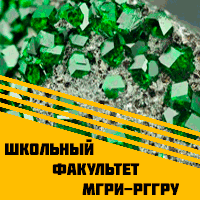Добрый день, Коллеги. Важное сообщение, просьба принять участие. Музей Ферсмана ищет помощь для реставрационных работ в помещении. Подробности по ссылке
Sea ice. Physics and remote sensing / Морской лед. Физика и дистанционное зондирование
During the winter months sea ice plays the most important role in the daily life of coastal communities of the cold regions of the Earth. As for the Arctic regions, especially Canada and Russia, the general trend in its retreat is leading to new opportunities for the extension of the navigational season and exploitation of natural resources. Growing interest in sea ice for socioeconomic purposes has also increased awareness of its role in affecting the global environment, the climate system, and most importantly the human aspects. The advent of remote sensing techniques from Earth observing satellites, as the major tool for obtaining global record of sea ice, is making it necessary to reexamine sea ice as a material with updated knowledge and approaches.
In the customary description of snow, fresh‐, and seawater ice, often the basic sciences and measurement techniques used are assumed to be known yet not covered or explained in details. These are mostly related to the thermodynamic high‐temperature state (being close to the melting point) of these materials, physics of solidification governing the development of microstructural features especially in sea ice, the impact of mobility and aging of sea ice on its geometrical and physical properties, and last but not least the birefringent properties of ice crystals that are used extensively for revealing internal substructures. By the same token, the customary description of the applications of remote sensing usually leaves out details of the electromagnetic wave interaction with ice and its snow cover, particularly the impact of the snow on the measured reflection, radiation, and radar scattering. This book is written with the hope of filling these gaps and to making a bridge between the physics and the remote sensing communities. This is spot‐on whether the readers are working on sea ice in the two primary polar cryospheres or on snow/ice of the secondary cryospheres of Himalaya and other mountain ranges <...>




